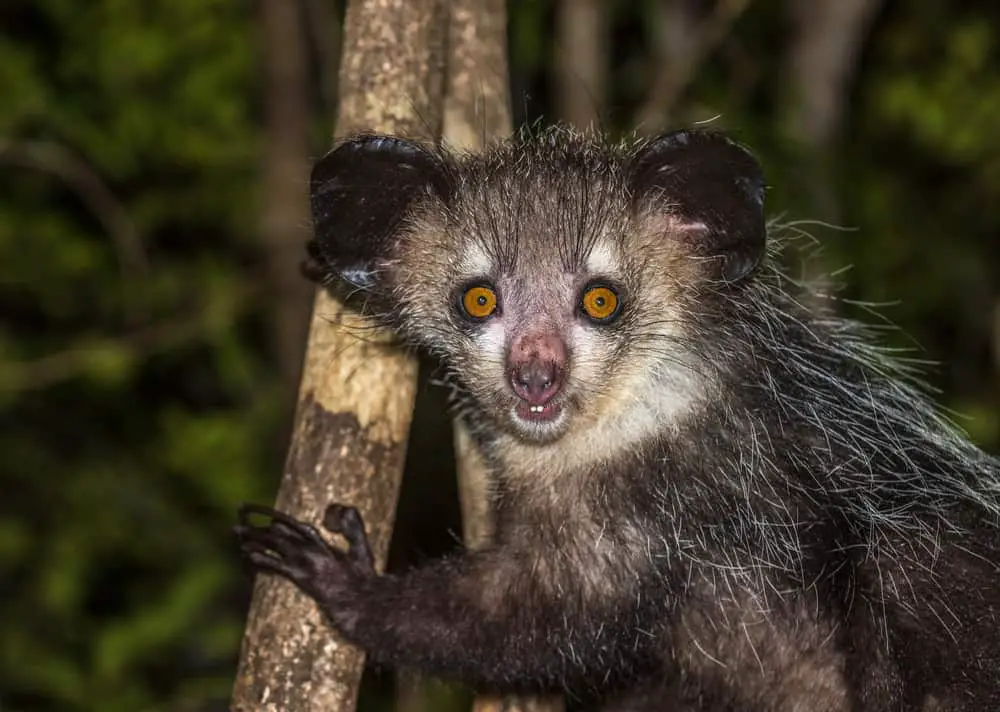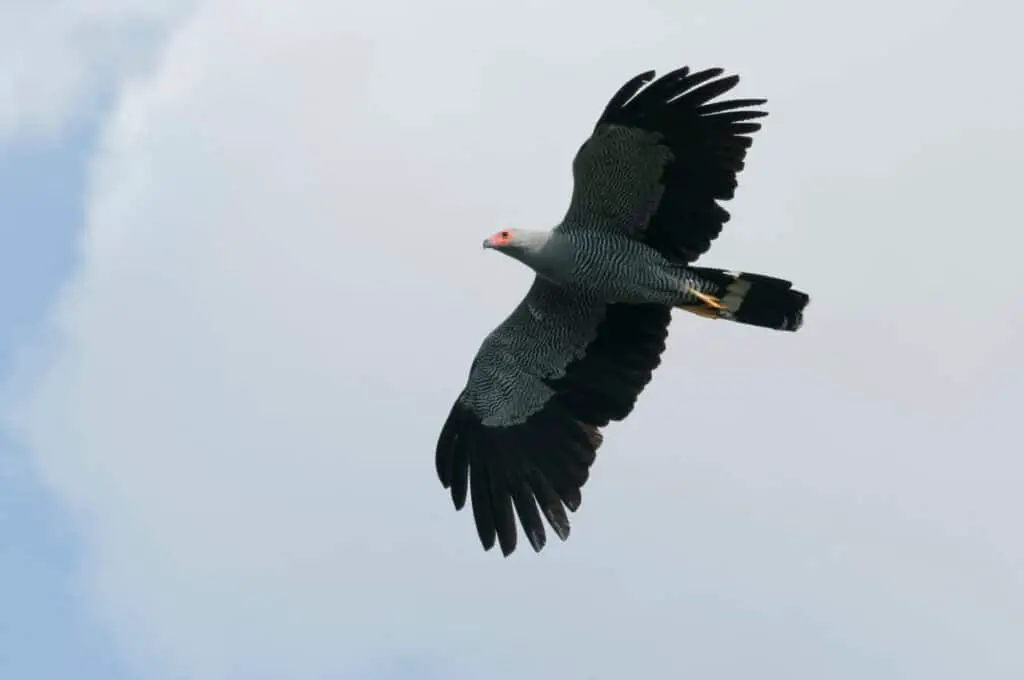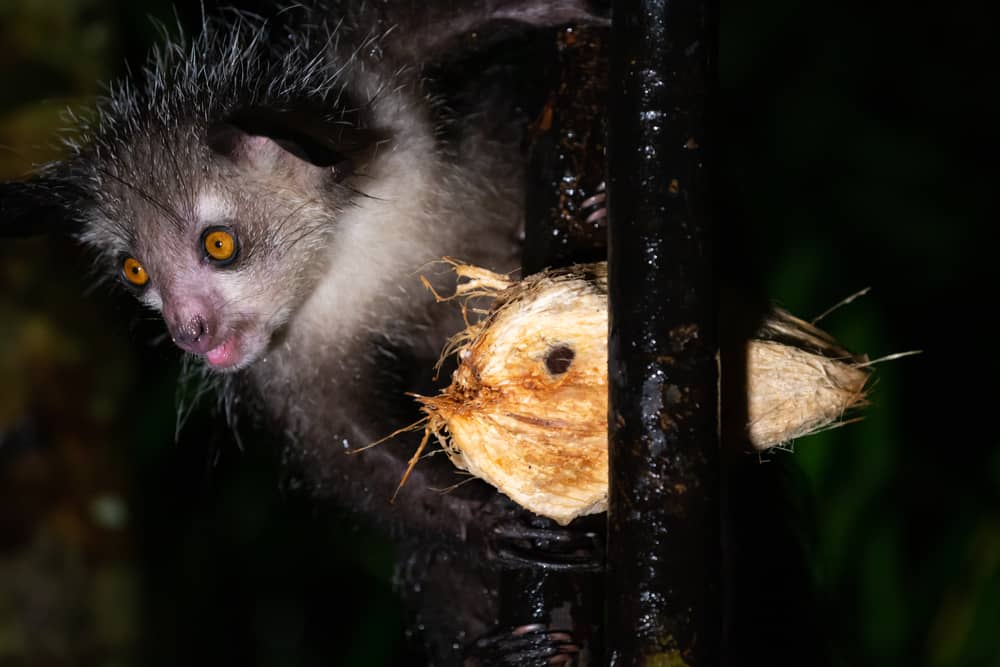The Aye-Aye is a rare and unique primate found only in Madagascar. It possesses several unusual traits that have made it an object of fascination for both researchers and the general public alike.
One such trait is its elongated middle finger, which it uses to extract insects from tree bark – a technique known as percussive foraging. Despite being protected by law, threats such as deforestation and hunting still pose significant risks to this species. Another threat comes from natural predators that prey on the Aye-Ayes.
Understanding the predator-prey relationships of endangered animals like the Aye-Ayes can provide valuable insight into their ecological roles within their habitats, help identify potential conservation measures, and inform management strategies aimed at protecting them from extinction.
Although there are limited studies focused specifically on predation of Aye-Ayes, anecdotal reports suggest that they fall victim to various forest-dwelling carnivores. This article aims to explore what we know about the predators of Aye-Ayes with a focus on how these interactions affect population dynamics and conservation efforts for this fascinating creature.

The Unique Traits Of Aye-Ayes
Aye-ayes are a unique species of primates found only in Madagascar. They have distinct physical and behavioral characteristics that set them apart from other lemurs, including their elongated middle finger which they use to extract insects from tree bark.
These creatures inhabit a wide range of ecosystems on the island, including rainforests, dry deciduous forests, and mangroves.
Despite being well-adapted to these environments, aye-ayes face several threats such as habitat loss due to deforestation and illegal hunting for bushmeat or traditional medicine.
However, evolutionary adaptations such as their specialized fingers and nocturnal lifestyle have helped them survive in this challenging ecosystem.
Percussive Foraging With Elongated Fingers
The Unique Traits of Aye-Ayes have been extensively studied, and their percussive foraging is one of the most remarkable. These primates use their elongated middle fingers to tap on trees and locate insects hiding within them. This unique skill not only sets aye-ayes apart from other primates but also gives them an evolutionary advantage in finding food sources that other animals cannot access.
Percussive Foraging with Elongated Fingers has allowed aye-ayes to thrive in Madagascar’s ecosystem, where they play a vital role as seed dispersers.
Their diet consists mainly of insect larvae found inside dead wood, which helps decompose it and return nutrients to the soil.
Additionally, because aye-ayes are nocturnal creatures, they help pollinate some plants while feeding on nectar during their foraging expeditions.
Overall, these primates’ unique traits have had positive effects on the ecosystem by contributing to forest regeneration and healthy plant growth.
Ecosystem Impact:
- Aiding in decomposition
- Seed dispersal
- Pollination
Curious about Aye-Ayes’ Senses? Let’s Explore How Good They Are!
Threats To Aye-Ayes
Aye-ayes have a limited number of predators due to their nocturnal and arboreal lifestyle. However, they are still vulnerable to attacks from large birds of prey such as the Madagascar Harrier Hawk and the Crested Serpent Eagle. These predators can easily locate and capture aye-ayes in the canopy layer where they spend most of their time foraging for food.
Apart from natural predators, human impact poses a significant threat to aye-aye populations. Destruction of habitat is one major issue that affects these primates’ survival. The destruction of forests through deforestation or slash-and-burn agriculture has resulted in fragmented habitats for aye-ayes, leading to isolation and reduced genetic diversity within populations.
Additionally, hunting by humans for bushmeat consumption or traditional medicine purposes also contributes significantly to population decline. Although efforts towards conservation are underway, continued interventions are necessary to safeguard this unique species from extinction.
| Threat | Impact |
|---|---|
| Deforestation | Fragmentation of habitat |
| Hunting | Population Decline |
| Isolation | Reduced Genetic Diversity |
The Importance Of Studying Predator-Prey Relationships
Aye-ayes are fascinating nocturnal primates that inhabit the eastern rainforests of Madagascar. Unfortunately, they face a myriad of threats such as habitat loss, hunting for bushmeat and cultural practices, and persecution due to superstitions. In addition, aye-ayes have predators that pose a significant threat to their survival.
Predators of aye-ayes include birds of prey like Madagascar buzzards (Buteo brachypterus) and Henst’s goshawks (Accipiter henstii), fossa (Cryptoprocta ferox) which is Madagascar’s largest predator, and domestic cats (Felis catus). These animals hunt aye-ayes either on the ground or in trees where they sleep during the day.
Understanding predator-prey relationships can provide valuable insights into how ecosystems function and highlight important conservation measures needed to protect endangered species like the aye-aye.
Benefits of understanding predator-prey relationships:
- Predicting population dynamics
- Identifying key drivers of ecosystem health
- Developing effective management strategies
- Shedding light on complex ecological interactions
The impact of predation on wildlife populations goes beyond just individual deaths. It affects birth rates, dispersal patterns, spatial distribution, genetic diversity, and overall fitness. Predators play an important role in maintaining balance within ecosystems by regulating herbivore numbers which in turn impacts vegetation growth and nutrient cycling.
Thus studying predator-prey relationships has both theoretical and practical implications for biodiversity conservation efforts worldwide.
Carnivores That Prey On Aye-Ayes
Aye-ayes, as a nocturnal lemur species, are equipped with behavioral adaptations to evade predators. However, they still face threats from several carnivorous animals in their natural habitats. These predators vary depending on the location and distribution patterns of aye-ayes around Madagascar.
In northern Madagascar, where most of the aye-aye populations reside, fossas are their primary predator. Fossas are large-bodied felids that can climb trees and hunt at night.
They have been observed killing adult aye-ayes by biting through their skulls or necks. In addition to fossas, other potential predators include birds of prey such as the Madagascar harrier-hawk, snakes like the Madagascan tree boa, and humans who consider them pests or superstition symbols.

Madagascan Harrier Hawk
The Madagascan Harrier Hawk is a raptor species found in Madagascar that can prey upon aye-ayes. These hawks have keen eyesight and excellent aerial agility, allowing them to spot and pursue aye-ayes in the forest canopy.
With their sharp talons and powerful beaks, they can swoop down and grab hold of the aye-aye, immobilizing it. The hawk may then carry the aye-aye to a suitable perch, where it can be consumed.
The hunting success of the Madagascan Harrier Hawk relies on its ability to surprise and ambush the aye-aye, taking advantage of its vulnerability while foraging or moving through the trees.
Madagascan Tree Boa
The Madagascan Tree Boa is a constrictor snake species found in Madagascar, and while aye-ayes are not their primary prey, they can occasionally prey upon them. These boas are adept climbers, allowing them to move through the trees where aye-ayes are active.
When encountering an aye-aye, the tree boa will strike, using its sharp teeth to latch onto the prey. The boa then coils its body around the aye-aye, constricting it with powerful muscles and restricting its movements.
Over time, the pressure from the constricting coils leads to suffocation, ultimately causing the demise of the aye-aye. The Madagascan Tree Boa will then swallow the aye-aye whole, relying on its ability to stretch its jaws and consume prey larger than its own head size.
How Interactions With Predators Affect Aye-Aye Populations
Interactions with predators play a crucial role in determining the population of species.
Aye-ayes are known to have only a few natural predators, including fossas and humans. Fossas hunt for aye-ayes both on the ground and in trees, but their success rate is relatively low due to the nocturnal nature of aye-ayes and their adeptness at hiding from predators.
However, human activities such as hunting, deforestation, and habitat destruction present an even bigger threat to the survival of aye-aye populations.
The impact of interactions with predators goes beyond just reducing the number of individuals in a population; it can also affect adaptive behaviors and consequently shape ecosystems.
In response to predation pressure, some species may evolve physical or behavioral adaptations that help them avoid becoming prey. For instance, studies suggest that aye-ayes’ elongated middle finger evolved specifically to extract insects hidden inside tree bark more efficiently than other primates while minimizing exposure to potential predators.
Therefore, any changes in predator-prey dynamics could potentially disrupt this balance and lead to cascading effects throughout the ecosystem.
The Fossa’s Predators Revealed: Unmasking the Threats
Conservation Efforts For Aye-Ayes
In situ conservation efforts for aye-ayes focus on protecting their natural habitat in Madagascar. This includes implementing sustainable land-use practices, preventing deforestation through reforestation initiatives and enforcing laws to protect the species from hunting or capture.
Protected areas have been established throughout Madagascar to safeguard not only the aye-aye but also other endangered species that share its habitat.
Captive breeding programs are another conservation effort being undertaken by various organizations around the world. These programs aim to increase the population of captive-bred aye-ayes which can then be released into protected habitats in Madagascar once they are ready.
Captive breeding also allows researchers to study the behavior, physiology, and genetics of these unique primates, providing valuable insights that can aid in their long-term survival.

Conclusion
Aye-ayes are a unique and fascinating species of lemur found only in Madagascar. They possess several distinctive traits, including elongated fingers used for percussive foraging. Unfortunately, these creatures face numerous threats from habitat loss to predation by carnivores.
Studying predator-prey relationships is crucial when it comes to understanding how interactions with predators affect aye-aye populations. Carnivores that prey on aye-ayes include fossas, which have been observed hunting adult aye-ayes as well as their young.
Conservation efforts for this endangered species are ongoing, including habitat restoration and captive breeding programs aimed at increasing population numbers in the wild.
In conclusion, while the future remains uncertain for aye-ayes due to various threats such as deforestation and predation, continued research into their ecology and behavior will aid conservationists in developing effective strategies to protect them and ensure their survival for generations to come.

